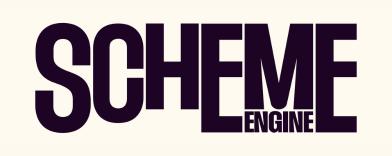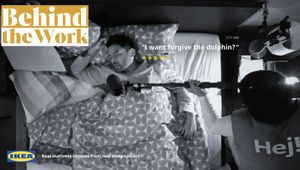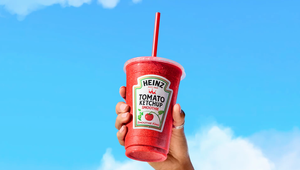
IKEA’s Disguised Ads Reminded Canadians That High Quality Can Come with Low Prices

It’s been said before, and it’s probably not going to be changing any time soon, but these days, Canadians have a lot on their minds when it comes to shopping. The cost of living continues to rise, there’s less room for reckless spending than ever before, and, as the cherry on top, we seem to be on the verge of kicking off a trade war with the US. In short, no matter where you are in the country, affordability is king.
This is something that IKEA Canada is keenly aware of. A longstanding believer in making great design accessible to the many, in recent years, the brand has put its money where its mouth is and invested heavily in decreasing prices to pre-pandemic levels.
Of course, sometimes, people still need a little reminder that the retailer has truly managed to strike a happy balance between quality and cost effectiveness. And to this end, its recent campaign, ‘Actually, it’s IKEA’ has done so in spectacular fashion. Created with longtime partner creative agency Rethink, the work once again adopts the brand’s typical playful tone across three unique spots, each of which parodies a luxury category. Fully embracing the visual and narrative tropes of high-end advertising, it’s eventually revealed in a hilarious twist that each is a disguised spot, actually emphasising the quality and affordability of IKEA’s products, rather than perfume, liquor or fashion.
To learn more about what it took to bring these to life, and why it was so important to send this message to Canadian audiences right now, LBB’s Jordan Won Neufeldt sat down with Rethink group creative director Geoff Baillie, as well as IKEA Canada’s head of marketing, Jonelle Ricketts, for a chat.
LBB> From the top, what was the brief for this campaign, and what immediate ideas came to mind?
Jonelle> IKEA has always been known for affordability – it’s been in our DNA for more than 80 years. But, we know that now more than ever, with the cost of living continuing to rise, Canadians are being extra mindful of their purchases and cannot afford to spend recklessly. Products and purchases can’t just be low-priced – they have to be worth it. Therefore, we wanted to show Canadians that with IKEA, they don’t have to compromise on quality in order to find products that fit their budget; IKEA solutions deliver quality and design at an affordable price point.
Geoff> Everyone knows IKEA's furniture is affordable, so we needed to dramatise that in a new and interesting way. Our strategist on this project, Emma Bayfield, had an insight in the brief about how people are often surprised to find that designer-looking furniture is actually from IKEA. That was the creative spark that led us to the idea.
LBB> Emphasising this insight by pulling the rug out from under some classic advertising tropes is hilarious! What made this the right approach for the creative, and the brand?
Geoff> We wanted to show how well IKEA furniture blends into any space – even unexpected ones. When you put furniture in these elevated environments, you’d really have no idea it’s IKEA’s. So, being able to lean on tropes from different ad genres, be it a fashion ad, perfume ad, or a spirits ad, gave us a lot to work with creatively, before the reveal at the end that it’s actually an IKEA ad.
Jonelle> People are often surprised by the quality of IKEA products given its affordable price point. They see something that looks high-end and can’t believe it’s actually IKEA. In fact, as an IKEA coworker, I have been in this situation myself.
During the campaign's early development, we often discussed how, as IKEA coworkers, we've experienced real-life situations where people are surprised when we reveal our furniture is from IKEA. We wanted to demonstrate this in the typical IKEA playful tone and manner, in order to really break through on the idea. While this campaign may seem like an entirely new approach for the brand, it actually brings it back to its core values: offering well-designed, functional home furnishings at prices so accessible that they can be enjoyed by as many people as possible.
LBB> Of course, this campaign isn’t just about affordability – it’s also meant to highlight IKEA’s ongoing investment into lowering prices. Can you tell us more about this? Why is it so important for your brand?
Jonelle> Affordability has always been a cornerstone for the IKEA brand. In everything we do, we are guided by our vision of creating a better everyday life for many people.
Our commitment over fiscal year 24/25 is to restore affordability and decrease our prices to pre-pandemic levels. Last year, we invested 80 million (CAD) to lower prices on over 1,500 products, and last week, we announced another 50 million (CAD) investment to lower prices on an additional 550 products within our selection. IKEA Canada also launched financial services last year, aiming to make home furnishings more accessible and convenient for Canadians.
LBB> Moving back to the creative, specifically what made the categories of fashion, perfume and liquor right for showcasing IKEA’s offerings?
Geoff> It was about finding the right brands that signify high-end designer quality, while having different tropes to suit different products. A fashion ad made sense for an IKEA chair, because you often see models posing and interacting with chairs in trendy fashion ads. A perfume ad made sense for IKEA sheets, because perfume ads will often have these flowy tapestries, creating these dream-like environments. And, a whisky ad made sense for an IKEA glass, for obvious reasons.
LBB> Seeing as each ad was designed to showcase a specific IKEA product, how did you select what to feature?
Jonelle> Choosing the right products was such an important part of the campaign’s development. While we always look to feature iconic IKEA products in our campaigns, this time around, we needed to take a different approach to ensure we were delivering on the bait and switch.
To do this, we worked closely with our internal and external partners to select key products that represented the amalgamation of high-quality, beautiful design, and affordable pricing. From the luxurious ‘DVALA’ sheet set, to the timeless ‘POKAL’ glass, to the modern ‘TEODORES’ chair, every product showed Canadians that quality doesn’t need to come with a high price tag.
LBB> And how did you ensure you captured the tropes of each category within the writing process?
Geoff> We really sweat the voiceover language that comes before and after the big reveal. We wanted everything in the first half of the spot to feel genuine to the ad genre it was tapping into, but we also wanted these descriptions to apply to the IKEA furniture after the reveal.
In the fashion spot for instance, we talk about being ‘minimal’, ‘a classic that goes with everything’, ‘always comfortable’ – phrases that feel like they could be about fashion, but after the reveal, are obviously describing a chair.
LBB> Of course, you had Mark Zibert directing! What was the collaboration like, and what made him perfect for the job?
Geoff> Mark is a very talented director, and he has experience working with a lot of the actual brands that we were spoofing. So, since he’s shot ads in these worlds before, it was easy to make the spots feel genuine and not lean too far into parody.
The other great thing about Mark is that he likes to collaborate and improvise – he’s always open to and interested in everybody’s ideas, and the final product was elevated by all of his experimentation on set.

LBB> The three spots all take place in very different locations – can you tell us more about where all you shot?
Geoff> We shot at three different locations around Toronto. In scouting locations with Mark’s team at Scouts Honour, we were looking for environments that suited the genres we were tapping. So, we found a great loft space for the fashion spot, a warehouse with high ceilings for the perfume spot, and an old mansion built in the 1920s for the whisky spot.
LBB> The actors’ reactions to the spot twists – their visible confusion – is hilarious! What did it take to bring out such fun cross-genre performances?
Geoff> With casting, we looked for actors who have experience in each of these worlds. A real fashion model, someone with experience representing alcohol brands, and so on. But, we also needed actors who had impressive faces and could communicate a lot with just their eyes, physicality, and posture. All three performances really delivered on that, and that’s a credit to Mark’s great eye for casting.

LBB> Each spot also features a tonally-fitting soundtrack. How did you bring this element to life?
Geoff> The goal with the music (brought to life by Vapor Music – led by Ted Rosnick and Ethan Myers) was to really convince viewers that they were watching one of these other brands' commercials. We needed to tap into the tropes of the genre enough that they accepted they were watching a perfume, whisky or fashion ad, but without leaning so hard into the tropes as to arouse suspicion that a rug-pull moment was about to happen. Ted, Ethan, and the whole crew at Vapor did a great job nailing that balance with these tracks.
LBB> What challenges have you faced during this project? How did you overcome them?
Geoff> One of the challenges as we got into production was making the ads genuinely feel like ads for other brands, without ever showing other brands. How do you make a whisky ad without showing the specific bottle or logo? But, as we got into it, we realised these genres have such well-established tropes that when you lean into them hard enough, the viewer doesn’t even notice the absence of an actual ‘product’. They buy into the aesthetic.

LBB> What lessons have you learned from the making of this campaign?
Geoff> I think the big lesson learnt was that when you have a simple, great, funny idea, it's very easy to generate enthusiasm from the team at large. And, when you have a lot of enthusiasm from your collaborators and an amazing client, the project gets easier and more rewarding to work on. Shoutout to Jonelle, Jacqueline Wark, and Patrick Dennis, who brought great ideas to the table and helped us problem solve, which got us to a great place in the end. It’s testament to the fact that the end result is always better when it feels like it’s coming from one shared vision.
Jonelle> Trust the vision and take some calculated risks. As you can imagine, making a commercial that purposely did not look like an IKEA commercial was a bit of a leap of faith. But the more we leaned into trusting our agency partners and their creative expertise, the stronger the work’s development was. There are times you need to lean in and take a risk, and this campaign was definitely a trust exercise that paid off.
LBB> Since launch, how have people responded to this campaign?
Geoff> The response to the campaign has been exactly what we’d hoped for – people are surprised! A friend of ours was telling us that when the ad came on at home, her mom made her guess what it was for, while just repeating ‘you’ll never guess, you’ll never guess’. We’re grateful that it’s resonating!
Jonelle> We have been so pleased to see the significant buzz the campaign is creating, and to hear the positive responses – not just from Canadians, but our coworkers across the globe as well. We know the world feels heavy at the moment, and therefore, we aimed to help lighten the mood and make people smile with this campaign. It's great to see that it is resonating.
LBB> Finally, do you have a favourite of the three spots, or a moment you’re especially proud of?
Geoff> There was a moment on set when the actor in the fashion spot was laying backwards on the chair as she heard the voice of the IKEA spokesperson, Jonas. She did this impromptu sort of shifty-eyed expression, and that is when we realised we had the perfect ending for our spot. There was never any doubt that we were going to end it that way, and we really anchored the edit with it. It’s one of those great moments borne out of improvisation and a talented actor with an expressive face.
Jonelle> It’s quite difficult to pick a favourite, as each one has a unique approach and personality that makes it special (it’s like picking a favourite child – you can’t!). But ultimately, we are so proud that each spot delivers some levity to Canadians, which hopefully leaves them with a little IKEA smile and twinkle.















